- Home
- Umberto Eco
On the Shoulders of Giants
On the Shoulders of Giants Read online
UMBERTO ECO
ON THE
SHOULDERS
OF GIANTS
Translated from the Italian by Alastair McEwen
THE BELKNAP PRESS OF HARVARD UNIVERSITY PRESS
Cambridge, Massachusetts • 2019
English translation copyright © 2019 La Nave di Teseo Editore, Milano
Originally published in Italian as Sulle spalle dei giganti : lezioni alla Milanesiana, 2001–2015
Copyright © 2017 La Nave di Teseo Editore, Milano
Published in the United States by Harvard University Press, 2019
Jacket art: Antoine Revoy
Jacket design: Annamarie McMahon Why
978-0-674-24089-6 (alk. paper)
978-0-674-24227-2 (EPUB)
978-0-674-24228-9 (MOBI)
978-0-674-24226-5 (PDF)
Library of Congress Cataloging-in-Publication Data is available from loc.gov
We are dwarfs on the shoulders of giants.
—BERNARD OF CHARTRES
Contents
Publisher’s Note
1 On the Shoulders of Giants
2 Beauty
3 Ugliness
4 The Absolute and the Relative
5 Beautiful Flame
6 The Invisible
7 Paradoxes and Aphorisms
8 Untruths, Lies, Falsifications
9 On Some Forms of Imperfection in Art
10 Some Revelations on Secrecy
11 Conspiracy
12 Representations of the Sacred
Bibliography
Index
Publisher’s Note
The texts published here were written by Umberto Eco, in the years shown at the end of each chapter, expressly for La Milanesiana, a cultural festival held annually since 2000 in Milan. Accepting the invitation to present a lectio magistralis twelve times between 2001 and 2015, Eco prepared these to be read aloud. Since 2008, every Milanesiana has had a theme, and Eco held to these themes—and in some cases, inspired them.
The first of his lectures, “On the Shoulders of Giants,” serves as apt premise to this book. Presented in 2001, it shares his vision of how the classics contribute to our own time and to the ongoing work of intellectuals. The last lecture printed here, “The Representation of the Sacred,” was conceived and prepared for the Milanesiana, but Eco was unable to present it. It strikes a fitting final chord.
It is fascinating to note the recurring themes in Eco’s speeches—more leitmotifs than repetitions. Their recurrence across the years bears witness to his enduring interest in the topics dearest to his heart.
1. On the Shoulders of Giants
I have always been fascinated by the historic tension of dwarfs and giants. At the same time, the famous argument about dwarfs and giants is only one chapter of the age-old struggle between fathers and sons, which, as will become clear, still very closely concerns us.
We needn’t consult any psychoanalysts to know that sons lean toward killing their fathers—and I use the masculine terms here only to match the literature on the subject, not meaning to ignore the fact that it is also a time-honored custom, from the bad blood between Nero and Agrippina to some sensational crimes in today’s news, to murder mothers.
The puzzle is rather that, mirroring the attacks by sons on their fathers, there have also always been attacks by fathers on their sons. Oedipus kills Laius, however blamelessly, but meanwhile Saturn devours his own children—and Medea is hardly someone who will have a nursery school named after her. Let’s not even mention poor Thyestes, who unknowingly downed a Big Mac made of his own sons’ flesh. For every heir to the throne of Byzantium who blinds his father, there are just as many sultans guarding against an overly rapid succession in Constantinople by killing the children of their first marriages.
The conflict between fathers and sons can also take on nonviolent forms and be no less dramatic for that. Imagine opposing one’s father by mocking him, as Ham did when he couldn’t overlook Noah’s having a little wine after all that water—upon which, we know, Noah reacted with a kind of racist exclusion, exiling his disrespectful son to the developing world. Let’s admit that consigning a line of descendants to thousands of years of endemic hunger and slavery just for making fun of dad after he’d had a few too many does seem truly excessive. And even if we consider Abraham, prepared to sacrifice Isaac, to be a sublime example of submission to the divine will, I would say that, in acquiescing, Abraham treated his son as a thing that was his to dispose of. (Believing the son would die of a slit throat while the father earned the benevolence of Yahweh—you cannot tell me the man was behaving according to our moral canons.) Luckily, Yahweh was joking—but Abraham did not know that. Isaac was especially unlucky, as can be seen by what happens to him after he in turn becomes a father. His son Jacob does not kill him, but he does rob Isaac of his right to name his heir, and with a low trick taking advantage of his blindness—a stratagem arguably more outrageous than a good old parricide.
Every querelle des anciens et des modernes involves a struggle parallel to these. To come to the seventeenth-century debate that gave us that phrase, it involved, on one side, Charles Perrault and Bernard Le Bovier de Fontenelle maintaining that the works of their contemporaries were more mature than those of their forebears and therefore better (and so the poètes galants and the esprits curieux favored the new forms of the story and the novel). The controversy arose and escalated when these advocates of the new were opposed by extremely authoritative figures, such as Boileau, who favored the imitation of the ancients.
When there is a dispute of this kind, the innovators are always opposed by the laudatores temporis acti (praisers of times past). And frequently, praise for the new and a breach with the past arises precisely as a reaction to rampant conservatism. While in our day we have had the Novissimi poets, at school we all learned that the poetae novi came two thousand years before them. In Catullus’s time, the word modernus had yet to be invented, but the word novi was applied to those poets who looked to Greek lyrical poetry to oppose the Latin tradition. Ovid, in The Art of Love (III, 121 ff.), declares that prisca iuvent alios (ancient times delight others): ego me nunc denique natum / Gratulor: haec aetas moribus apta meis (I celebrate having been born now; this time suits my nature). It is a time of civilization, he explains, when none of the crudity of ancient ancestors remains. Horace (Epistles II, 1,75 ff.) reminds us that, even then, the advocates of the new irritated those who praised times past. Instead of “modern,” he uses the adverb nuper to say that he resents it when a book is deemed unworthy not for lack of elegance sed quia nuper (but because it has only been written lately). We encounter that same attitude from those today who, on critiquing a young writer, complain that novels are no longer what they used to be.
The term modernus makes its entry right at the end of what we call antiquity—that is to say, around the fifth century AD, when all of Europe plunged into those truly dark centuries that preceded the Carolingian Renaissance—centuries that strike us as the least modern times of all.
It was precisely in those “dark” centuries, in which the memory of past greatness was fading, leaving only burnt-out, dilapidated vestiges, that innovation set in, even though the innovators were unaware of it. In fact, it was then that the new European languages began to prevail, perhaps the most innovative and overwhelming cultural event of the last two thousand years. At the same time, classical Latin was becoming medieval Latin. This period marked the emergence of signs of pride in innovation.
The first act of pride was the recognition that a Latin was being invented that was no longer that of t
he ancients. After the fall of the Roman Empire, the old continent witnessed an agricultural crisis and the destruction of the great cities, Roman roads, and aqueducts; living in a land covered with woods, the monks, poets, and miniaturists saw the world as a dark forest inhabited by monsters. As early as 580, Gregory of Tours declared the end of literature, and the Pope (I do not remember which one) wondered about the validity of baptisms performed in Gaul, where they were baptizing in nomine Patris et Filiae et Spiritus Sancti—that is, in the name of the father, the daughter, and the holy spirit—because even the clergy no longer knew Latin. But the period between the seventh and tenth century marked the development of what has been called the “Hisperic aesthetic,” a style that spread from Spain to the British Isles, and partly to Gaul, too.
The classical Latin tradition had described (and condemned) this style by labeling it first “Asian” then “African,” in contrast with the harmony of the “Attic” style. The Asian style was criticized for what classical rhetoric called kakozelòn, or mala affectatio (ill affectation). For an example of just how deeply the fathers of the church of the fifth century were scandalized by cases of mala affectatio, consider this philippic by Saint Jerome (in Adversus Jovinianum I):
These days there are so many barbarous writers and so many discourses rendered so muddled by stylistic vices that one can understand neither who is talking nor what he is talking about. Everything expands and contracts like a diseased serpent that falls apart as it vainly essays to make its coils. All is entangled in inextricable verbal knots, and one has to agree with Plautus: “Here no one can understand anything except the Sybil.” What’s the point of this verbal witchcraft?
But what was a vice for the classical tradition became a virtue for Hisperic poetics. Hisperic writing no longer complied with traditional syntactic and rhetorical norms; the rules of rhythm and meter were broken to produce lists of a baroque flavor. Long series of alliterations that the classical world would have deemed cacophonic now produced a new music; Aldhelm of Malmesbury (Letter to Eahfrid, PL 89.159) enjoyed himself hugely by constructing long phrases in which (almost) every word begins with the same letter: “Primitus pantorum procerum praetorumque pio potissimum paternoque praesertim privilegio panegericum poemataque passim prosatori sub polo promulgantes …”
The lexicon was enriched with incredible hybrids, the use of loan words from Hebrew and Greek, and the discourse became dense with cryptograms. Where classical aesthetics saw clarity as an ideal, the Hisperic aesthetic strove for obscurity. Where classical aesthetics saw proportion as an ideal, the Hisperic aesthetic favored complexity, the abundance of epithets and periphrasis, the gigantic, the monstrous, the uncontrollable, the fathomless, and the prodigious. The waves of the sea were described as astriferus or glaucicomus, and other neologisms such as pectoreus, placoreus, sonoreus, alboreus, propriferus, flammiger, gaudifluus were much appreciated.
These sixth-century lexical inventions are the same ones honored by the seventh-century grammarian Virgil in his Epitomae and Epistolae. This mad grammarian served up passages from Cicero and Virgil (the other Virgil, the real one) that those authors would never have written. It has been surmised that he belonged to a group of rhetoricians who all adopted names of classical authors and, under their false names, exulted in writing in a Latin that was anything but classical. The linguistic universe that Virgil the Grammarian created looks as if it sprang from the imagination of a modern surrealist, perhaps the Italian poet Edoardo Sanguineti, even though it would have to be the other way around. He maintained that there were twelve types of Latin, and thus twelve different words for, say, fire: ignis, quoquinhabin, ardon, calax, spiridon, rusin, fragon, fumaton, ustrax, vitius, siluleus, aeneon (Epitomae 1.4). Likewise there were various words for battle, including praelium because it can take place at sea (called praelum because its immensity earns it the primacy, or praelatum, of the marvelous). On the other hand, he questions the very rules of Latin, and reports that two rhetoricians he calls Galbungus and Terrentius debated for fourteen days and fourteen nights about the vocative case of ego—a problem of the utmost importance, because it was a question of how to refer emphatically to oneself (“Oh, I, have I done well?” O egone, recte feci?)
But let’s move on to the vulgar tongues. Toward the end of the fifth century, people had already dropped Latin in favor of Gallo-Roman, Italo-Roman, Hispano-Roman, and Balkano-Roman. These were spoken, not written, languages. Yet, even before the Serment de Strasbourg and the Charter of Capua, this looks like a celebration of linguistic novelty. With this proliferation of tongues people were harking back to the tale of the tower of Babel, a story usually seen as a sign of a curse or catastrophe. But in the birth of the new vulgar languages some now dared to see a sign of modernity and improvement.
In the seventh century, some Irish grammarians attempted to describe the advantages of vulgar Gaelic over Latin grammar. In a work titled The Precepts of the Poets, they referred to the structure of the tower of Babel: just as eight or nine materials (depending on the version) had been used in the construction of the tower—clay and water, wool and blood, wood and lime, pitch, linen, and bitumen—so Gaelic had been formed from nouns, pronouns, verbs, adjectives, adverbs, participles, conjunctions, prepositions, and interjections. The parallel is revealing: we must wait for Hegel for the legend of the tower to be cast again as a positive model. The Irish grammarians maintained that Gaelic was the first and only case in which the confusion of tongues had been overcome. Its creators, by means of an operation we might now call cutting and pasting, chose the best features of every language. When there was something for which no language had found a name, they produced one—and in such a way as to reveal an identity between the form, the word, and the object.
Centuries later, with a completely different awareness of his own exploit and his own dignity, Dante saw himself as the inventor of a new vernacular. Faced with the plethora of Italian dialects, which he analyzed with the precision of a linguist but the condescension and occasional disdain of a poet (and one who never doubted he was the greatest of all), Dante concluded that there was a need for a language that was illustrious (in the sense of spreading light), cardinal (serving as a mainstay and a rule), regal (worthy of a place in the royal palace of the national realm, if the Italians were ever to have one), and courtly (the language of government, the law, and wisdom). In his De Vulgari Eloquentia, he outlined the rules of composition of the only true illustrious vernacular, the poetic language he proudly felt he had founded—and which he contrasted with the tongues of the Babelic confusion, as one who had rediscovered the primordial affinity with things that was proper to the Adamitic language. This illustrious vernacular, to which Dante gave chase as if it were a “perfumed panther” (hidden from the eye but leaving its heavy scent to track), represented a restoration of the Edenic language, hence a tongue capable of healing the post-Babelic wound. This bold concept of his own role as the restorer of the perfect language explains the fact that, rather than criticize the multiplicity of tongues, Dante emphasized their quasi-biological power to renew themselves and change over time. It was precisely on the basis of this claimed linguistic creativity that he was able to set himself the task of inventing a modern, natural, perfect language without chasing after such lost models as the original Hebrew. He set himself up as a new (and more perfect) Adam. Compared to Dante’s pride, Rimbaud’s far more recent assertion, il faut être absolument moderne, looks dated. In the struggle between fathers and sons, the Inferno is far more patricidal than the Saison en enfer.
Perhaps the first episode of the generational clash in which the word modernus makes an explicit appearance occurs not in the literary sphere but in that of philosophy. Whereas the early medieval period found its primary philosophical sources in late Neoplatonic texts, in Augustine, and in those Aristotelian writings called the Logica Vetus, scholastic circles in the twelfth century were gradually introduced to the other Aristotelian texts (such as the Prior and Posterior Analytic
s, the Topics, and On Sophistical Refutations) that came to be known as the Logica Nova. This stimulus led to a shift from a merely metaphysical and theological discourse to an exploration of all those subtleties of reason that modern logic sees as the liveliest inheritance of medieval thinking, and hence to what was defined (clearly with the pride common to all innovative movements) as logica modernorum.
The nature of the logica modernorum’s novelty as compared to the theological thinking of the past is made clear by the fact that the Church has canonized Anselm of Aosta, Thomas Aquinas, and Bonaventure, but has not done the same for any proponent of modern logic. It is not that these men were heretics. Simply, with respect to the theological debates of past centuries, they were interested in other things. Today we would say that they dealt with the workings of the mind. These men were more or less consciously killing their fathers, just as the humanist philosophers would later try to kill them—outdated modernists that they were by then—but all the humanist philosophers succeeded in doing was to sentence them to hibernation in the university lecture halls, where contemporary (by which I mean today’s) universities would eventually rediscover them.
In the cases I have mentioned, it nevertheless appears that every act of innovation, and of protest against the fathers, always occurs with some recourse to an ancestor, who is recognized as better than the father one is trying to kill. The poetae novae challenged the Latin tradition by imitating the Greek lyricists; the Hisperic poets and Virgil the Grammarian created their linguistic hybrids by adopting loan words from Celtic, Visigothic, Greek, and Hebrew; the Irish grammarians celebrated a language that was opposed to Latin because it was a collage of far more ancient tongues; Dante needed a strong forefather like Virgil (the classical Latin poet); and the logica modernorum was modern thanks to the rediscovery of lost Aristotelian texts.

 Baudolino
Baudolino The Name of the Rose
The Name of the Rose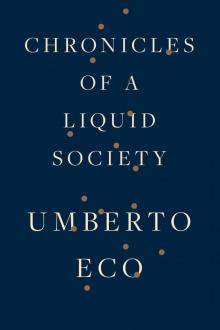 Chronicles of a Liquid Society
Chronicles of a Liquid Society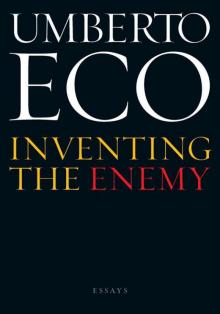 Inventing the Enemy: Essays
Inventing the Enemy: Essays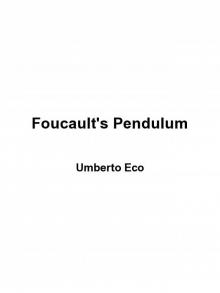 Foucault's Pendulum
Foucault's Pendulum How to Travel With a Salmon & Other Essays
How to Travel With a Salmon & Other Essays Numero zero
Numero zero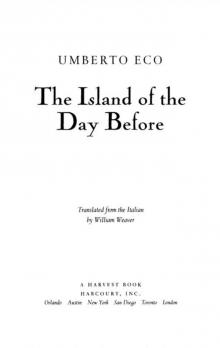 The Island of the Day Before
The Island of the Day Before UMBERTO ECO : THE PRAGUE CEMETERY
UMBERTO ECO : THE PRAGUE CEMETERY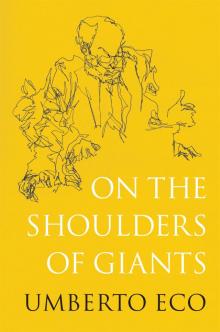 On the Shoulders of Giants
On the Shoulders of Giants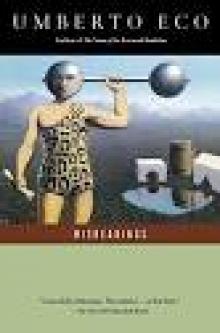 Misreadings
Misreadings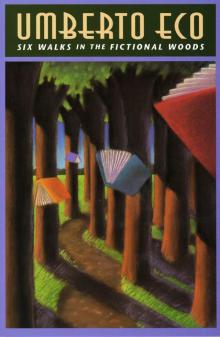 Six Walks in the Fictional Woods
Six Walks in the Fictional Woods The Mysterious Flame Of Queen Loana
The Mysterious Flame Of Queen Loana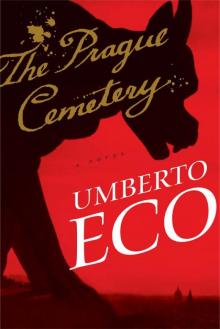 The Prague Cemetery
The Prague Cemetery On Literature
On Literature Lost structure
Lost structure